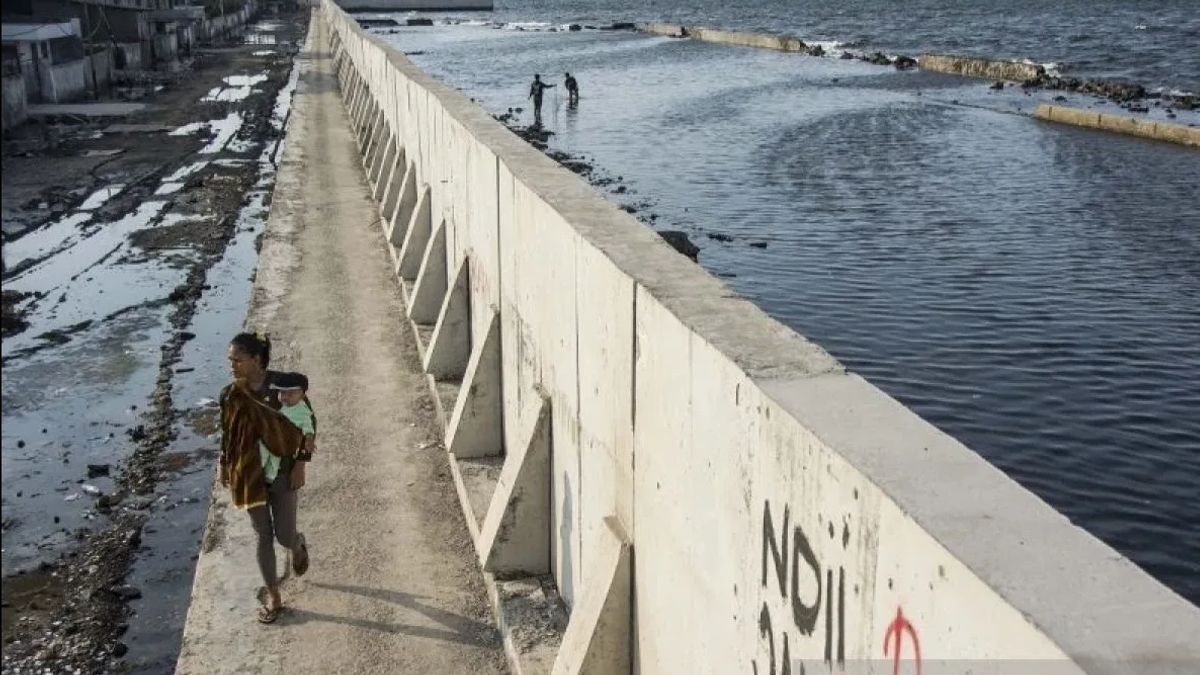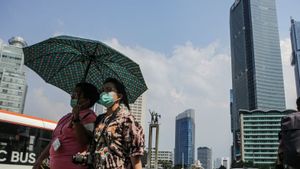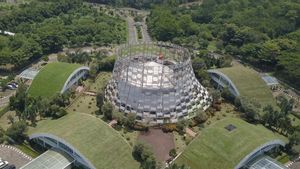Coordinating Minister for the Economy Airlangga Hartarto conveyed the government's plan to build coastal embankments and sea embankments (giantseawall) as one of the long-term projects.
The Megaproject was created to overcome the threat from tidal flooding and land subsidence in the northern region of Java Island.
"The government has prepared a long-term scenario to mitigate the risk of a climate change disaster in the Javanese Pantura through the concept of building anantseawall or a sea embankment," Airlangga said at a national seminar in Jakarta, reported by ANTARA, Wednesday, January 10.
For the giantseawall project in the Jakarta area, there are three stages or phases of development.
The first phase begins with the construction of coastal and river embankments, as well as the construction of a pump and polder system in the North Coast of Jakarta.
Then in the second phase, the construction of a sea embankment with an open concept (open dike) on the west side of the north coast of Jakarta which must be carried out before 2030.
The third phase is the construction of a sea embankment on the east side of the north coast of Jakarta which must be carried out before 2040. If the rate of land subsidence continues after 2040, the concept of an open sea embankment will be modified into a closed sea embankment.
Based on several studies, Coordinating Minister Airlangga conveyed that the estimated economic losses directly due to annual flooding on the coast of Jakarta reached IDR 2.1 trillion per year, and could continue to increase every year to reach IDR 10 trillion per year in the next 10 years.
Meanwhile, the estimated budget requirement for the first phase project is IDR 164.1 trillion. Project financing uses the Government and Business Entity Cooperation (KPBU) scheme.
Airlangga explained that the island of Java, which acts as a national contributor to the largest GDP, is currently facing challenges in the form of erosion, abrasion, flooding, and land subsidence, especially in the northern coastal area (Pantura) of Java.
Citing the results of the JICA 2020 study, it shows that the Javanese northern coastal area accounts for around 20.7 percent of GDP through industrial activities, fisheries, transportation, and tourism.
SEE ALSO:
In addition, the northern coastal area is also a fairly dense residential area, with an estimated population of more than 50 million people.
Therefore, said Airlangga, the threat of tidal flooding and land subsidence not only endangers the sustainability of economic activity, but also the lives of millions of people living in the region who have the potential to be affected by disasters.
"It is estimated that there are at least 70 Industrial Estates, 5 Special Economic Zones (SEZs), 28 Industrial Design Areas, 5 Industrial Growth Center Regions," explained Airlangga.
Meanwhile, Defense Minister Prabowo Subianto assessed that megaprojectiantseawall may be realized in the next 30-40 years.
"Earlier, we saw that for the first phase alone it was Rp164 trillion, maybe everything I heard later, it would all take 50-60 billion US dollars or maybe more," said Prabowo.
The English, Chinese, Japanese, Arabic, and French versions are automatically generated by the AI. So there may still be inaccuracies in translating, please always see Indonesian as our main language. (system supported by DigitalSiber.id)

















